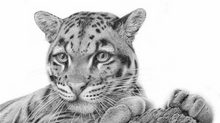Sea Otters: The Endearing Marine Mammals That Play an Essential Role in Ecosystems
- Vincenzo De Luca
- Apr 23, 2023
- 2 min read
Sea otters are beloved marine mammals known for their adorable appearance, playful behavior, and significant ecological impact. These furry creatures, also called "sea beavers," are found along the Pacific coast of North America, from Alaska to California. In this article, we'll explore the fascinating world of sea otters, their unique characteristics, and their essential role in marine ecosystems.
Appearance and Characteristics of Sea Otters
Sea otters are the smallest marine mammal in North America, weighing between 35 and 100 pounds and measuring 4 to 5 feet in length. Their fur is dense, waterproof, and can range in color from brown to black. Unlike other marine mammals, sea otters lack blubber to keep them warm in cold water. Instead, they rely on their thick fur, which traps air and provides insulation.
One of the most distinctive features of sea otters is their use of tools. They use rocks and other objects to crack open the shells of clams, mussels, and other shellfish. They also use their forepaws to groom and clean their fur, which is essential for maintaining its insulating properties.

Ecological Role of Sea Otters
Sea otters play a vital role in the marine ecosystem. They are a keystone species, meaning their presence or absence can significantly impact the ecosystem's structure and function. Sea otters feed on sea urchins, crabs, and other invertebrates that graze on kelp forests. Without sea otters, these herbivores can overgraze and destroy kelp forests, which provide vital habitat for many marine species.
Kelp forests are also crucial for carbon sequestration, meaning they absorb and store carbon dioxide from the atmosphere, helping to mitigate the impacts of climate change. By protecting kelp forests, sea otters indirectly help mitigate climate change.
Sea otters also play a crucial role in maintaining the health of seagrass beds. They feed on crabs and other invertebrates that can damage seagrass beds, which are essential for many marine species and also serve as carbon sinks.

Conservation of Sea Otters
Sea otters were once hunted to near extinction for their fur, but their populations have since rebounded, thanks to conservation efforts. Today, sea otters are listed as a threatened species under the Endangered Species Act. They face threats such as oil spills, pollution, and habitat loss. The decline of sea otters can have significant ecological consequences, as discussed earlier, making their conservation crucial.
Conclusion
Sea otters are charismatic and endearing marine mammals that play an essential role in the marine ecosystem. Their use of tools, unique appearance, and playful behavior make them beloved by many. However, their significance goes beyond their cuteness; they are a keystone species that helps maintain the health of vital ecosystems. Protecting and conserving sea otters is vital for the well-being of the marine ecosystem and our planet.














































Comments